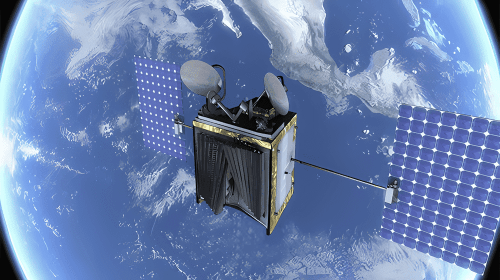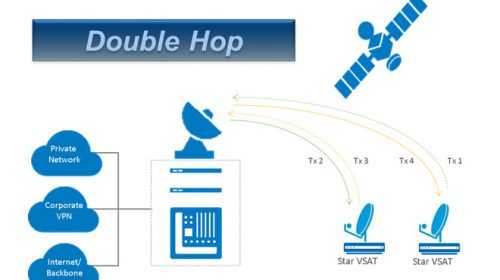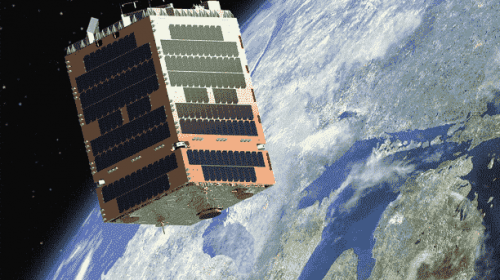SpaceX Gets 14-launch Deal to Deploy Telesat's Internet Satellites
Sep 21, 2023
SpaceX and Telesat have partnered for a major multi-launch agreement to deploy Telesat’s highly advanced Lightspeed broadband satellite constellation. Starting in 2026, SpaceX will conduct 14 dedicated Falcon 9 missions to lift Telesat’s Lightspeed satellites into low Earth orbit.
 A SpaceX Falcon 9 lifts off from Launch Complex 39A at the Kennedy Space Center in Florida June 23. Credit: SpaceX
A SpaceX Falcon 9 lifts off from Launch Complex 39A at the Kennedy Space Center in Florida June 23. Credit: SpaceX
Each SpaceX launch will carry up to 18 Lightspeed satellites at a time, capitalizing on Falcon 9’s capacious payload fairing. The launches will originate from both California and Florida, benefitting from SpaceX’s bi-coastal launch infrastructure. This launch schedule takes full advantage of SpaceX’s industry-leading launch cadence. With the proven capability to launch every few weeks, SpaceX can rapidly populate Lightspeed’s constellation. Telesat aims to begin network testing by 2027 and start delivering ultra-high throughput services that same year.
Lightspeed represents a transformative new broadband platform, comprised of an initial 198 satellites providing complete global coverage. The highly advanced satellites feature optical interlinks, forming a space-based data mesh network. This enables Lightspeed to deliver fiber-like multi-gigabit per second links to customers anywhere in the world.
Lightspeed’s satellites are under construction by MDA Corporation, whom Telesat contracted last August after switching from an earlier design. The satellites replace a larger concept originally slated for production by Thales Alenia Space. However, schedule delays led Telesat to pivot to MDA for improved timeline certainty. MDA will mass produce the 1,650-pound satellites at an ambitious cadence of around one per day. Telesat’s firm order is for manufacturing 156 satellites which provides baseline constellation coverage. The company is seeking additional financing for the full 198 satellites to enable enhanced network density.
Telesat originally anticipated starting Lightspeed launches in 2020. However, changing satellite designs postponed the timeline for several years. Telesat’s Dan Goldberg noted the agreement with SpaceX now gives line-of-sight to commence launching in 2026 and conduct on-orbit testing in 2027. The SpaceX deal provides flexibility, with each Falcon 9 flight capable of lofting up to 252 satellites in total if maxed out. The number of satellites per launch will depend on payload mass and desired orbit parameters. In the end, Lightspeed will represent Telesat’s most advanced constellation yet and usher in new ultra-high throughput satellite broadband services for commercial and government users.
Lightspeed will achieve revolutionary performance by combining next-gen technologies. The satellites feature multiple electronically steered antenna beams ideal for supplying “hot spot” bandwidth flexibly. Customers like airlines, cruise ships, and mobile operators gain guaranteed bandwidth allocations wherever needed. Additionally, the satellites are linked by optical crosslinks versus traditional radio frequency. This unleashes terabit-level capacity across the network for low-latency routing of enormous data flows. Lightspeed opens new horizons in satellite broadband to meet tomorrow’s connectivity demands.
The Telesat-SpaceX alliance exemplifies complementary strengths. As a technology pioneer, Telesat designs transformative new broadband architectures like Lightspeed. Meanwhile, SpaceX provides rapid, reliable launch vehicles and economies of scale to deploy these futuristic systems. Their synergies will help accelerate the new space revolution, extending high-capacity connectivity to unserved communities worldwide.
The Lightspeed collaboration underscores Telesat and SpaceX’s shared vision of leveraging innovative space technologies to bridge the digital divide. With Lightspeed’s breakthrough performance and SpaceX’s responsive launch model, the promise of universal broadband access is closer than ever. Their partnership ushers in a new era of satellite constellation capabilities and serves customers across various sectors from maritime to aeronautical markets. Telesat and SpaceX are boldly expanding the frontiers of connectedness from space.
Telesat is a pioneering global satellite operator headquartered in Ottawa, Canada. Originally incorporated in 1969 as Telesat Canada, the company has nearly 50 years of expertise in space technologies and communications services. Telesat designs builds, and operates state-of-the-art satellite networks that drive connectivity worldwide. They provide broadband, broadcast, and data connectivity solutions for maritime, aeronautical, government, and enterprise customers. Telesat is at the forefront of leveraging space technologies to connect the world.





